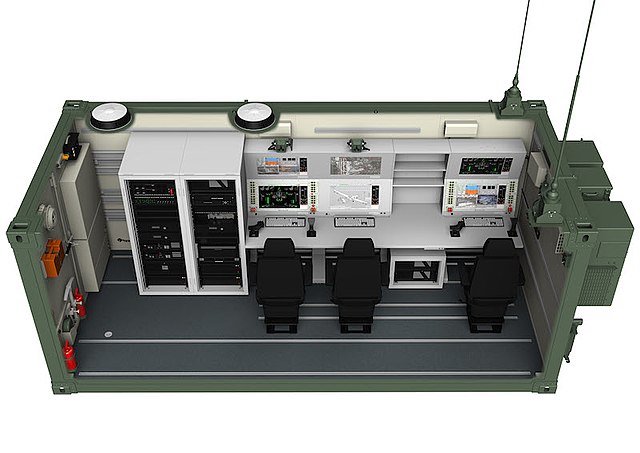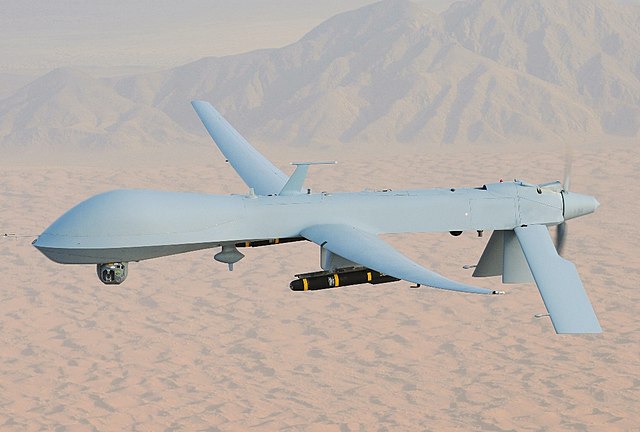UAV ground control station
UAV ground control station (GCS) is a land- or sea-based control centre that provides the facilities for human control of Unmanned Aerial Vehicles. It may also refer to a system for controlling rockets within or above the atmosphere, but this is typically described as a Mission Control Centre.
The inside of the RQ-7A Shadow 200 GCS
The inside of the Bayraktar TB2 GCS
Two ground control stations of Ukrainian Air Force Bayraktar TB2
[1] Worthington Sharpe Wing GCS an example of a portable UAV Ground Control Station (drone GCS)
General Atomics MQ-1 Predator
The General Atomics MQ-1 Predator is an American remotely piloted aircraft (RPA) built by General Atomics that was used primarily by the United States Air Force (USAF) and Central Intelligence Agency (CIA). Conceived in the early 1990s for aerial reconnaissance and forward observation roles, the Predator carries cameras and other sensors. It was modified and upgraded to carry and fire two AGM-114 Hellfire missiles or other munitions. The aircraft entered service in 1995, and saw combat in the war in Afghanistan, Pakistan, the NATO intervention in Bosnia, the NATO bombing of Yugoslavia, the Iraq War, Yemen, the 2011 Libyan civil war, the 2014 intervention in Syria, and Somalia.
General Atomics MQ-1 Predator
At Paris Air Show 2007
A Predator flies on a simulated Navy aerial reconnaissance flight off the coast of southern California on 5 December 1995.
Predator operators at Balad Camp Anaconda, Iraq, August 2007




![[1] Worthington Sharpe Wing GCS an example of a portable UAV Ground Control Station (drone GCS)](https://upload.wikimedia.org/wikipedia/commons/thumb/9/96/%22Wing_GCS%22_Portable_Ground_Control_Station_for_UAVs_%28drones%29_from_Worthington_Sharpe.jpg/640px-%22Wing_GCS%22_Portable_Ground_Control_Station_for_UAVs_%28drones%29_from_Worthington_Sharpe.jpg)



